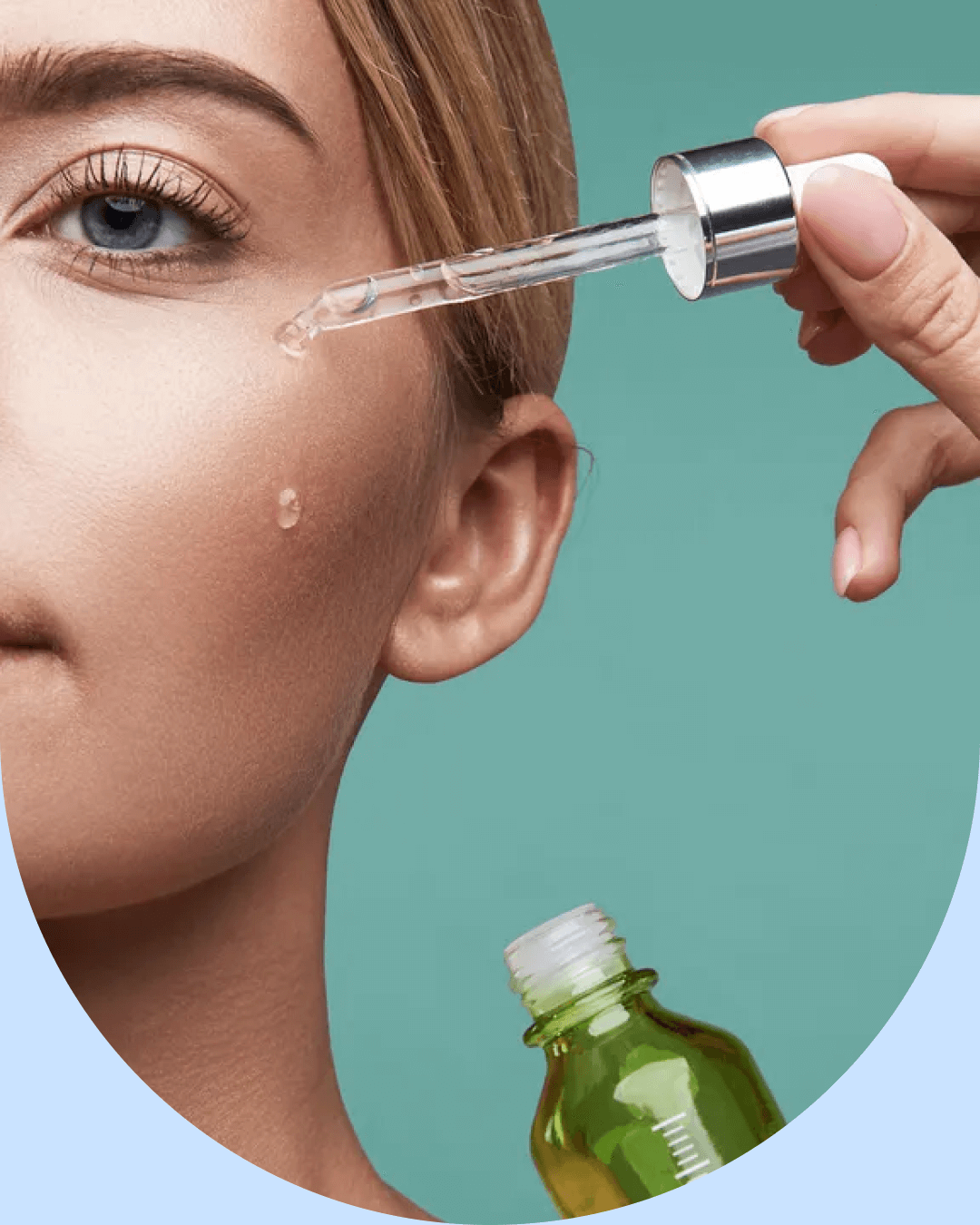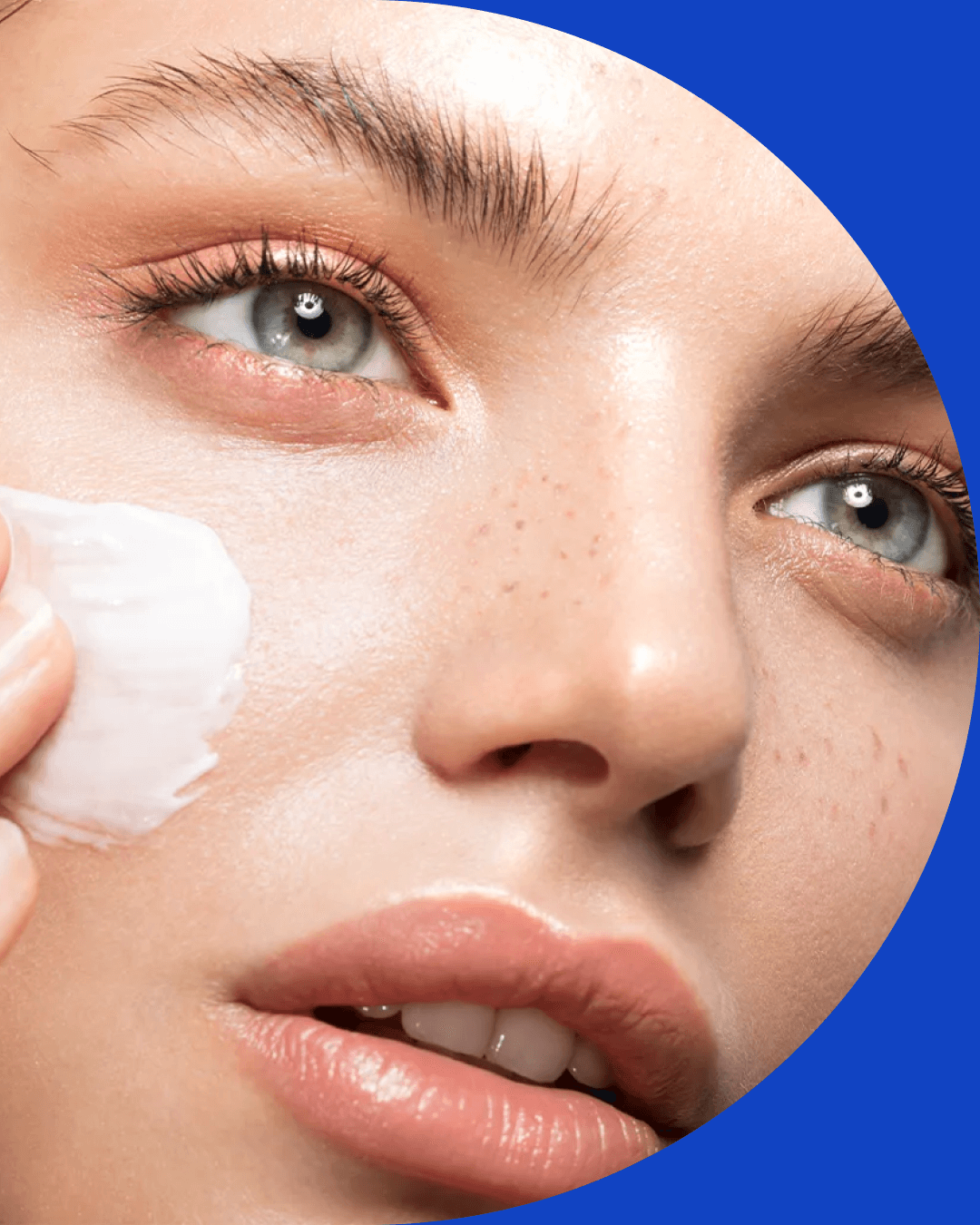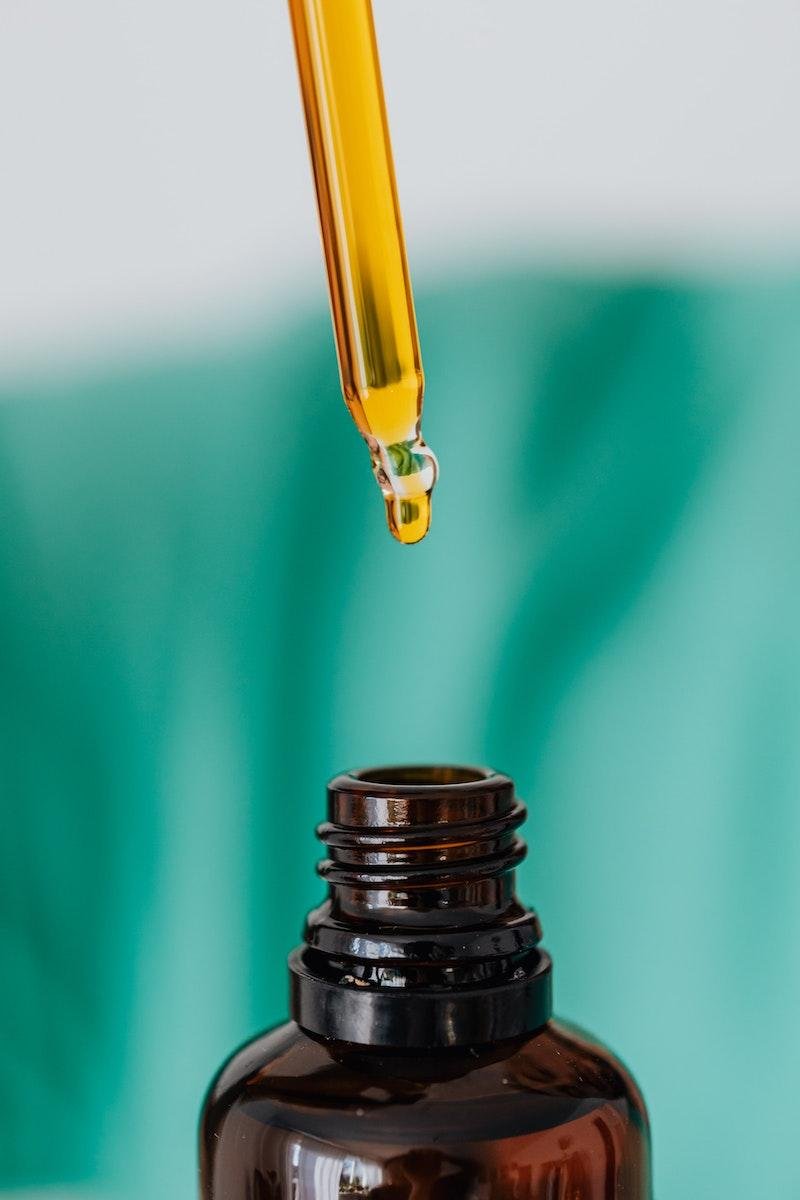Retinol has captured the spotlight in the beauty industry. Its extraordinary ability to diminish signs of aging and address common skin concerns like acne and hyperpigmentation has elevated it to the status of “skincare essential”. Endorsed by countless beauty enthusiasts and dermatologists, retinol’s anti-aging properties are well-supported by scientific research. In the following sections, we delve into the realm of retinoids, exploring its different variations, effective integration into skincare routines, and invaluable tips to navigate potential side effects while maximizing the benefits of this potent ingredient.
What is Retinol?
Retinol is a powerful antioxidant that belongs to the retinoid family, derived from vitamin A. It has gained widespread recognition in skincare as a “holy grail” ingredient for addressing various skin concerns, with a particular focus on signs of aging and acne.
Retinol has two primary functions: increasing cell turnover and stimulating collagen production in the skin. Cell turnover refers to the process of shedding old and dull skin cells, replacing them with fresh and rejuvenated ones. By enhancing this process, retinol helps to reveal smoother and more youthful-looking skin. Collagen, a crucial protein responsible for the skin’s structure and firmness, naturally declines with age, leading to the formation of wrinkles and sagging. Retinol counteracts this decline by promoting collagen synthesis, which improves skin elasticity and firmness.
Moreover, retinol acts as an antioxidant, shielding the skin from damage caused by free radicals. These unstable molecules can harm skin cells and accelerate the aging process. By neutralizing free radicals, retinol reduces oxidative stress, helping to maintain a healthier and more vibrant complexion.
Extensive research and studies have shown the efficacy of retinoids in skincare, making it a trusted and reliable ingredient. It is suitable for a wide range of skin types, age groups, skin tones, and conditions. Whether you aim to address aging signs, acne, or texture issues, retinol can be a valuable addition to your skincare routine, backed by scientific evidence and proven results.
Retinoid vs. Retinol – What’s the Difference?
Retinoids are a category of skincare ingredients that contain derivatives of vitamin A. These derivatives are used to enhance the texture, tone, and overall appearance of the skin. The term “retinoid” is an umbrella term for various forms of vitamin A, including retinol, retinaldehyde, adapalene, tretinoin (also known as retinoic acid or Retin-A), and isotretinoin. These retinoids are available in both over-the-counter (OTC) and prescription-strength formulations, offering different levels of potency and efficacy for skincare purposes.
Retinol is a specific type of retinoid and one of the most widely used forms in skincare products. It is available over the counter without a prescription. Retinol is less potent than prescription-strength retinoids but still offers significant benefits for the skin. It is milder and generally well-tolerated, making it a popular choice for beginners in vitamin A skincare. While it may take longer to see results with retinol compared to prescription-strength retinoids, consistent use can lead to noticeable improvements in fine lines, wrinkles, and skin texture.
The main difference between retinol and prescription-strength retinoids lies in their potency and effectiveness. Prescription-strength retinoids like tretinoin and adapalene are stronger and typically yield faster and more visible results. They are often recommended for more severe skin concerns such as acne or advanced signs of aging.
How does Retinol Work?
Retinoids come in different forms and strengths depending on where in the conversion process from retinol to retinoic acid it is. This conversion process, called oxidation, reduces the strength of the retinoid as it converts, with retinol being the weakest. The more conversions a retinoid has to go through, the weaker it becomes. When you apply retinol to your skin, it converts into retinaldehyde (retinal), which then undergoes one more conversion to become retinoic acid (Retin-A/Tretinoin).
So, the process retinoids go through is:
- Retinol converts to retinaldehyde (retinal)
- Retinaldehyde converts to retinoic acid
- Your body uses the retinoic acid to spur skin cell turnover
Retinoic acid (Tretinoin/Retin-A) doesn’t require any further conversion to be able to be used by the skin, which is why it is the most potent retinoid available on the market. The main difference between retinoic acid and retinol/retinaldehyde/retinol esters is that the latter need to be converted into retinoic acid before they can be used by the skin.
Types of Retinoids
Retinoids undergo a conversion process before they can be utilized by the skin. Different skincare products utilize retinoids at different stages of this process. Below, we cover these forms of retinoid as well as a few others that are common in skincare:
- Retinol: Found in many over-the-counter skincare products, retinol is the standard form of retinoids derived from vitamin A. When applied to the skin, it converts into retinoic acid, the active form that provides its beneficial effects. Retinol effectively addresses fine lines, wrinkles, and skin texture concerns. This is a weaker, over-the-counter form of vitamin A that is converted into retinaldehyde and then retinoic acid in the skin.
- Retinaldehyde (Retinal): This form of retinoid is a step closer to retinoic acid in the conversion process. It is known for being more potent than retinol and can deliver faster results. This is a stronger form of vitamin A, ahead of retinol and retinyl palmitate.
- Tretinoin: Tretinoin, also known as retinoic acid (Retin-A), is a prescription-strength retinoid. It is highly potent and widely used for treating various skin concerns, and is an FDA-approved acne treatment. Tretinoin requires careful usage and monitoring due to its potential for skin irritation. It is usually recommended under the guidance of a healthcare professional.
- Retinyl Palmitate: As a retinol ester, retinyl palmitate combines retinol with palmitic acid. It is a milder form of retinol commonly used in gentler skincare formulations. Retinyl palmitate typically exhibits lower potency than retinol and may take longer to produce visible results. This is a weaker form of vitamin A that is often used in over-the-counter skincare products.
- Adapalene: While not strictly a retinol, adapalene is a synthetic retinoid frequently used for acne treatment. It regulates cell turnover and reduces inflammation. Adapalene is available both over the counter and with a prescription, depending on the concentration.
- Accutane (isotretinoin): A prescription, oral medication derived from vitamin A. It is a powerful retinoid used primarily for severe and persistent acne cases. Accutane requires careful medical supervision due to its potential side effects and should only be taken under the guidance of a healthcare professional.
The Benefits of Using Retinol in Your Skincare Routine
Retinol is considered the gold standard in skincare, thanks to its numerous anti-aging and anti-acne benefits. It stands out as one of the most extensively studied skincare ingredients available, backed by scientific research that confirms its effectiveness.
No matter what strength or type of retinoid used, it benefits the skin by:
- Increased Cell Turnover: Retinol speeds up the process of cell turnover, which is the natural shedding of dead skin cells and the generation of new ones. By accelerating cell turnover, retinol helps to reveal fresher, younger-looking skin. This process can also help to improve skin texture and reduce the appearance of roughness and unevenness.
- Stimulation of Collagen Production: Collagen is a protein that provides structure and elasticity to the skin. As we age, collagen production decreases, leading to the formation of wrinkles and sagging skin. Retinol stimulates collagen synthesis, encouraging the production of new collagen fibers. This helps to improve skin firmness, elasticity, and overall smoothness.
- Enhanced Skin Renewal: Retinol can promote the production of new blood vessels in the skin, which improves blood circulation and nutrient delivery. This enhanced circulation can support skin cell renewal and help maintain a healthy complexion.
- Combats Acne and Breakouts: Retinol has been shown to be effective in treating acne and preventing breakouts thanks to its exfoliating properties. It helps unclog pores, regulate oil production, and reduce inflammation, leading to clearer, healthier skin.
- Antioxidant Activity: As an antioxidant, retinol neutralizes free radicals, which are unstable molecules that can damage skin cells and contribute to premature aging. By reducing oxidative stress, retinol helps protect the skin from environmental damage and maintains a healthier and more youthful appearance.
- Gradual but long-lasting results: While the results may not be immediate, consistent use of retinoids over time can yield significant and long-lasting improvements in the skin’s appearance and texture. Patience and consistency are key when incorporating retinoids into your skincare routine.
 How to Incorporate Retinol Into Your Skincare
How to Incorporate Retinol Into Your Skincare
Retinoids come in various forms and strengths, including face washes, toners, serums, creams, and moisturizers. If you’re looking to include retinol in your skincare routine for anti-aging purposes, the ideal time to start is in your mid-20s or early 30s. Begin with an over-the-counter product that has a low concentration to allow your skin to build tolerance. As you age, you can gradually increase your retinol usage and incorporate stronger products.
When starting retinol, remember:
- Start with a low concentration: When beginning with retinol, it’s advisable to start with a low concentration product (around 0.3% is a good starting point). This allows your skin to acclimate to the ingredient and reduces the risk of irritation.
- Frequency of use: Initially, start by using retinol every other night, or every third night. You can gradually increase the frequency to nightly use as your skin adjusts. If you experience excessive dryness or irritation, scale back the frequency of application.
- Gradually increase over time: As your skin becomes accustomed to retinol, you can gradually increase your usage. This can be done by using your product more frequently, switching to a higher concentration retinol, or trying a different derivative with increased potency.
- Use retinol at night: Retinol can increase sensitivity to sunlight, so it’s best to use it at night as part of your evening skincare routine. Apply retinol after cleansing and toning, allowing it to absorb fully before applying any other products and always use sunscreen during the day.
- Patience is key: Results from retinol may take time to become noticeable. It can take anywhere from a few weeks to a few months to see significant improvements in the appearance of fine lines, wrinkles, and hyperpigmentation. Consistency and patience are key when using retinol in your skincare routine.
Side Effects of Retinol
While retinol has numerous benefits, it’s important to be cautious about potential side effects. Improper or excessive use of retinol, such as starting with too high a strength or using it too frequently, can compromise the skin barrier. If you experience excessive redness, irritation, peeling, or flaking, it’s recommended to discontinue using retinol and switch to gentle, soothing products to repair the skin. Allow your skin time to recover before reintroducing retinol or other potentially irritating products.
Some common side effects to watch out for when using retinol include:
- Dryness and flakiness: Retinol can cause dryness and flakiness, especially when starting with higher concentrations or using it too frequently. This is due to its exfoliating properties, which can disrupt the skin’s moisture barrier.
- Redness and irritation: Some individuals may experience redness, irritation, or a mild burning sensation when using retinol. This is typically a sign of sensitivity or overuse. If the irritation persists or becomes severe, discontinue use and consult a dermatologist.
- Sensitivity to sunlight: Retinol can increase the skin’s sensitivity to sunlight. Always apply sunscreen with a high SPF during the day and take additional sun protection measures, such as wearing hats or seeking shade.
Retinol Best Practices & Tips for Use
To maximize the benefits of retinoids while minimizing potential side effects, follow these best practices:
- Start low and slow: Begin with a low concentration of retinol and gradually increase it over time. This approach allows your skin to adjust and minimizes the chances of experiencing severe irritation. When applying retinol, use only a small amount on your face. Applying more than needed won’t enhance the benefits and can actually increase the likelihood of irritation.
- Moisturize and hydrate: To counteract the potential drying effects of retinol, it is crucial to moisturize your skin sufficiently. If you are using a strong or prescription-based retinol, you should adjust your skincare routine to address dryness and dehydration.
- Be patient and consistent: Results from retinol take time. Consistency is key, so incorporate retinol into your skincare routine regularly and be patient with the progress. It can take several weeks or months to notice significant improvements in your skin’s appearance.
- Don’t use retinoids while pregnant or breastfeeding: Retinol and retinoid derivatives, including oral medications like Accutane, should generally be avoided during pregnancy and/or breastfeeding due to their potential risks to development. If you’re pregnant, trying to get pregnant, or breastfeeding, discontinue retinol use and consider using alternatives like bakuchiol.
- Be mindful of ingredients: Avoid using retinol with AHAs or BHAs, as this can cause skin irritation and damage due to their similar exfoliating effects. Certain ingredients like benzoyl peroxide and vitamin C may not be compatible with retinol due to potential reactions or pH differences. It’s best to use benzoyl peroxide on separate days from retinol, and consider using vitamin C in the morning or on alternate days to ensure compatibility.
- Follow instructions carefully: Different types of retinoids come in different forms, so always read the instructions carefully. If you’re using prescription-strength retinoid products like tretinoin, Accutane, or Adapalene, follow the guidance of your prescribing doctor.




